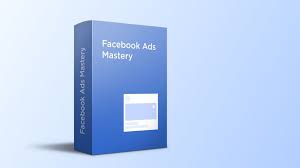Facebook Ads Mastery: A Comparative Analysis of Targeting Methods and Ad Formats In 2023
In the ever-evolving landscape of digital marketing, mastering Facebook ads is crucial for businesses seeking to reach their target audience effectively. Two critical components of Facebook advertising are the targeting methods and ad formats used. In this knowledge base article, we will compare and contrast two popular targeting methods – “Interest-based targeting” and “Lookalike audience targeting,” along with two prevalent ad formats – “Carousel ads” and “Video ads.” We will also delve into the potential benefits, risks, limitations, and impacts of each approach, backed by real-world case studies to illustrate their effectiveness.
- Interest-Based Targeting vs. Lookalike Audience Targeting:
Interest-Based Targeting: Interest-based targeting involves defining specific interests, behaviors, and demographics to reach relevant audiences. Advertisers can select categories, keywords, or Facebook pages related to their target audience’s interests. This method allows for a precise audience selection based on users’ explicit preferences, making it a popular choice for many advertisers.
Benefits: a. Granular targeting: Advertisers can narrow down their audience to a high level of granularity, increasing the chances of reaching potential customers. b. Enhanced relevance: By tailoring ads to match users’ interests, ad engagement and conversion rates tend to be higher.
Risks and Limitations: a. Limited reach: Overly specific targeting may result in a smaller audience pool, potentially hindering the ad’s overall reach and impact. b. Inaccurate interest selection: Misidentifying the interests of the target audience can lead to ineffective ad campaigns and wasted resources.
Lookalike Audience Targeting: Lookalike audience targeting involves identifying users with similar characteristics and behaviors to an existing customer base or a custom audience. Facebook uses its algorithms to find users who share similarities with the seed audience, allowing advertisers to expand their reach to new, potentially interested users.
Benefits: a. Expanded reach: Lookalike targeting allows advertisers to reach new audiences beyond their existing customer base, increasing the potential for growth. b. Improved ad relevance: As the new audience shares traits with existing customers, the ads are more likely to resonate with them.
Risks and Limitations: a. Data quality dependence: The effectiveness of lookalike targeting relies heavily on the quality and accuracy of the seed audience data. b. Reduced control: Advertisers have limited control over the specific attributes that Facebook’s algorithm considers when creating the lookalike audience.
- Carousel Ads vs. Video Ads:
Carousel Ads: Carousel ads enable advertisers to showcase multiple images or videos within a single ad unit, allowing for interactive and engaging storytelling. Users can swipe through the carousel cards, providing a dynamic experience and increased opportunities for conveying various messages.
Benefits: a. Increased engagement: Carousel ads’ interactive nature captures users’ attention, leading to higher engagement rates. b. Product showcasing: Advertisers can showcase a range of products or features within one ad, appealing to different customer preferences.
Risks and Limitations: a. Complex creation: Designing effective carousel ads may require more effort and resources compared to single-image ads. b. Message dilution: If not curated carefully, carousel ads may dilute the main message and confuse viewers.
Video Ads: Video ads leverage the power of motion, visuals, and sound to convey compelling messages to the audience. Facebook video ads auto-play in users’ feeds, increasing the likelihood of catching users’ attention.
Benefits: a. High engagement: Video ads tend to capture users’ attention quickly, resulting in higher engagement rates. b. Brand storytelling: Videos allow advertisers to tell a cohesive brand story and evoke emotions, making a lasting impression.
Risks and Limitations: a. Production costs: Creating high-quality video ads may involve substantial production costs, particularly for small businesses. b. Mobile data usage: Video ads can consume more mobile data, potentially leading to user frustration and a negative brand perception.
Mastering Facebook ads involves understanding the nuances of targeting methods and ad formats. Interest-based targeting and lookalike audience targeting offer distinct benefits and limitations, while carousel ads and video ads cater to different engagement preferences. By carefully considering these approaches and analyzing real-world case studies, businesses can optimize their Facebook ad campaigns and achieve greater success in reaching their target audience and achieving their marketing objectives.
